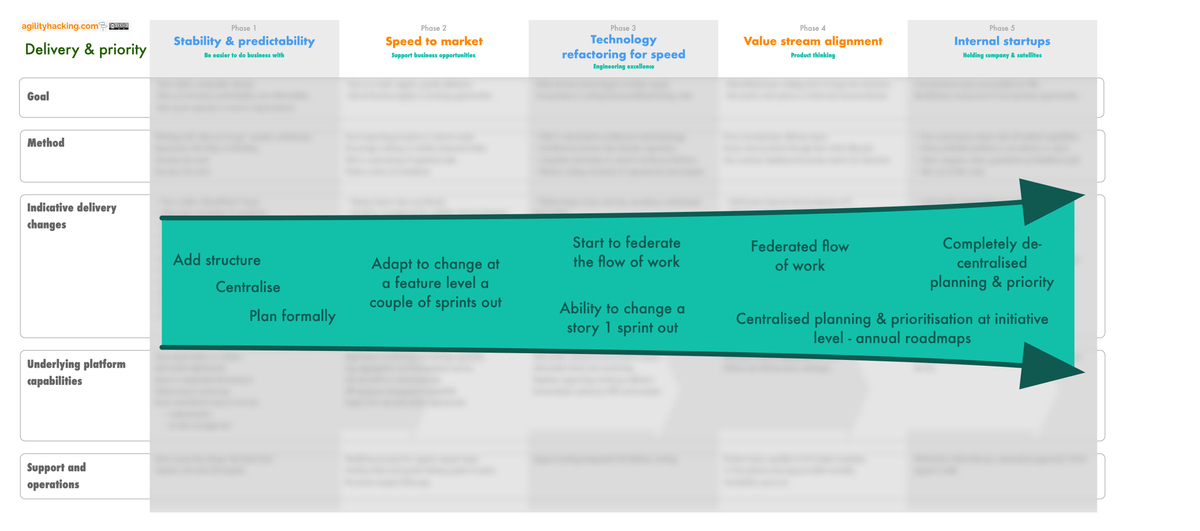


AGILITY HACKING
- …


AGILITY HACKING
- …

The arcs
Things build on things
What are arcs?
Visualise the journey
In this section we explain why the phases are essential as building blocks. Dependencies build on each other in, what we refer to as arcs across the transformation. Arcs show the trail of dependencies across the 5 phases defined here. They show how the journey builds over time, each from one particular perspective.
Delivery and priority
Let's look at the changes needed to progress the delivery world from start to finish (...there is no finish).
Depending on your starting point, it's likely that delivery is faltering right now. The first phase introduces some structure:
- all work is captured and visualised
- a single point of entry for all work
- a hierarchy for capturing change big and small
- socialisable, short-term "plans"
- centralised priority decisions
Some of these may feel "un-Agile" but are the travel sickness pills needed to earn trust, bring people with you and to be able to begin the journey in earnest.As the journey progresses, this centralised, planned approach becomes increasingly federated. With this dispersal of the work directly into the teams comes a greater self-determinism and adaptability, with only grand business goals set centrally.In our experience, companies that attempt to jump directly to a purely federated model tend to suffer from lack of delivery and lack of alignment. This results in lack of trust and the journey is usually called to an abrupt halt.
Delivery style
As the journey transpires the delivery style will change. Initially, it's likely that delivery will be judged on the amount of output generated - a feature factory setup. Passing through the phases enables this to transition to judgements based on outcomes - a move to being customer-centric and using Product Thinking.
As this transition unfolds, work will move from being batched as projects - transient, set by someone else - to being product-focused - long-term, but iterative, with the team deciding which experiments to run next based on customer feedback.

Product
It's likely that at the start there isn't really any product thinking, the world is a Feature Factory - stakeholders producing a roadmap of pre-solutionised features and the teams responsible for "nothing more" than delivering against it. As the journey progresses the theme becomes perfecting fast, regular and robust delivery, to the customer in short iterations. Once timely delivery is achieved, teams can take on the responsibility of using data and qualitative research to derive solutions to stakeholder identified customer problems. The ultimate destination is a product-led organisation, responsible for identifying the most valuable customer problems to go after. In addition, an overlay of enabling technologies and industry trends are applied to derive a Product Strategy, which is a force multiplier against the competition.

Data and decision making
At the beginning of the journey it's likely that no data is available to drive decisions about what to deliver next. In these scenarios the opinion of the Highest Paid Person in the room drives the discussion. As the phases play out, more and more relevant data becomes available, initially allowing for the Highest Paid Person to be more informed. Eventually the data is rich enough for it alone to drive the feature selection and for the team to feel confident that they are going after the best opportunity at each point.

agilityhacking.com 2021




